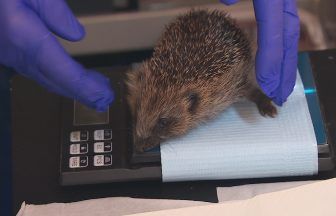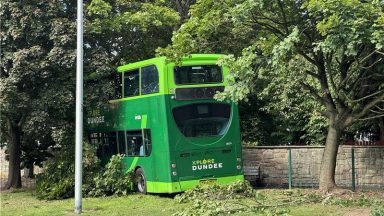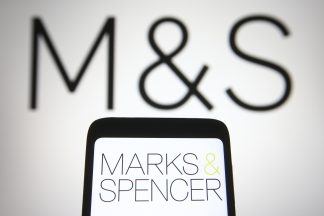Archeologists have revealed a Viking sword found at a burial site on Orkney dates back to the ninth century.
The sword was found during excavations of a cemetery at Mayback, Papa Westray, Orkney in 2015.
Experts have now identified the rare sword as one of the heaviest designs of the Viking era.
The sword and its surrounding soil was lifted and transported to a lab in an entire block to preserve as much evidence as possible.
It has been X-rayed but is so corroded and fragile experts haven’t been able to see the underside of it yet.
Although currently only visible through X-ray, experts said the guards appear “highly decorated”.
Andrew Morrison, of AOC Archaeology, said: “This rare survival will have many stories to tell.
“To preserve as much evidence as possible, we lifted the whole sword and its surrounding soil in a block to be transported to the lab and forensically excavated there.
“It’s so fragile we don’t even know what the underside looks like yet, so our understanding is sure to change in the coming months.
“The iron in the sword has heavily corroded, with many of the striking details only visible through x-ray.
“At this stage we’ve identified the Mayback sword as a Pedersen Type D.
“These are typically associated with the 9th century.
“Type D swords are some of the heaviest from the Viking Age, which would need the balance of a substantial hilt to stabilize them.”
The excavations at Mayback revealed a number of other finds, including evidence of a Viking boat burial, a shield, arrows and a buckle.
The buckle has stylised animal paws grasping the tongue bar, a design popular in Scandinavia from around 850AD to 950 AD, and was only one of two found in Scotland.
Historic Environment Scotland (HES) has funded research into the burials and said the work planned over the next few months could ‘blow some minds’.
Mr Morrison said: “This buckle would have been a mass-produced object most likely cast in Scandinavia.
“There are only around ten known examples of these buckles from the Britain and Ireland, and this is the second Scottish example we have.
“The other known one was found at Cruach Mhor, on Islay.
“The buckle is stuck to the sword due to corrosion.
“Based on the position of the sword in the burial, we’re not sure if it was associated with a waist belt or part of the sword scabbard.
“We’re optimistic this is a question we’ll be able to answer with further conservation and analysis.”
Mr Morrison said the bundle of arrow heads, that were still attached to their shafts, had leaf-shaped blades and mostly dated to the 10th and 11th centuries.
These arrowheads were likely used for hunting rather than warfare.
He said: “Another extremely rare survival is a bundle of arrowheads still attached to their arrow shafts.
“At the moment it’s hard to tell how many there are within the lumpy mass, but we think there are up to six arrows.
“The arrowheads have leaf-shaped blades and a broad date range, mostly concentrated around the 10th and 11th centuries.
“The blades are also broad, suggesting they were used for hunting rather than warfare.”
“The shield boss from the boat burial is a Scandinavian type dating from around 850-950 AD.”
Follow STV News on WhatsApp
Scan the QR code on your mobile device for all the latest news from around the country


 SWNS via SWNS
SWNS via SWNS




















